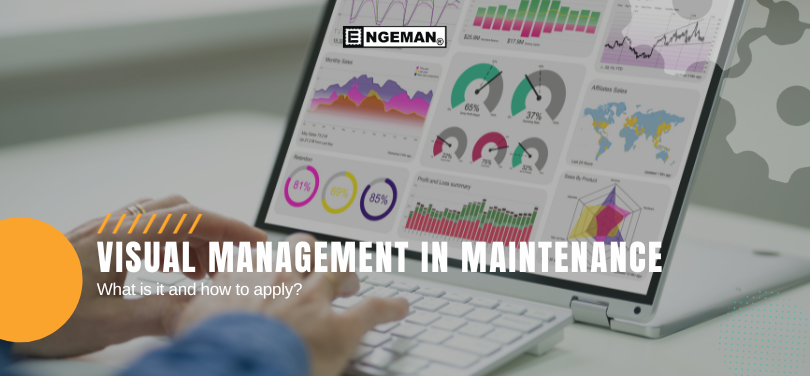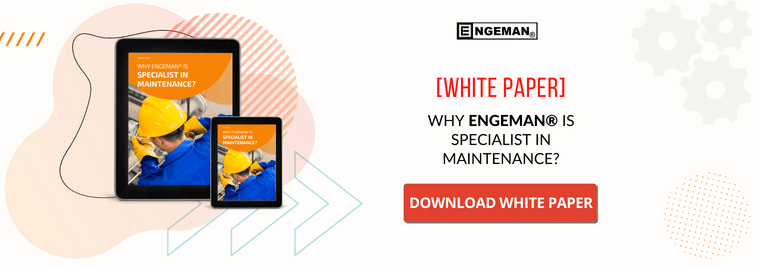For a business to be successful, it is essential that management is done in a precisely and professional manner. Only in this way it will be possible to recognize problems, identify the greatest needs and make good decisions.
In this scenario, visual management appears. This model has been successfully applied to companies of varied sizes and departments. The proposal can even go beyond financial management or people management and reach maintenance care.
To understand how to use this feature and what its characteristics are, follow this article about visual management and understand how to implement this alternative.
What is visual management?
For a long time, management was centering and restricted to certain hierarchy stages. Only a few people had access to data such as targets, performance, and observed issues. Faced with an increasingly dynamic scenario that requires employee’s performance, visual management has appeared as a transparency solution. Basically, it is a management type that want aims to give access to all those involved about indicators, performances and analysis, in general.
It is a complete and integrative model, which aims to connect employees and managers towards common targets. In short, visual management reveals, in a clear, expansive and fast way, all relevant information and indicators to the people of interest. Data are presented in an easily accessible place, which ensures information democratization.
In which departments can visual management be applied?
One of the visual management advantages is, precisely, the possibility of being applied in several company departments. Because it has characteristics that are not specific to one or another activity, it is able to mold itself to needs. It adapts to factories of several types and even to retail or service provision.
The methodology can be applied, for example, on the production line, so that everyone understands what steps have been completed and what still must to be done. It is also used in retail inventory or even in project management. A technology development, for example, can be accompanied by this method. The important thing is that deployment is well planned, in order to ensure that the steps can really be followed by all employees.
Benefits of Visual Management
In addition to versatility, visual management brings results that are not achieved with traditional means of management. It ensures a high level of communication and promotes several steps related to enterprise. To convince yourself about this option, here are some of the main advantages to use this alternative.
- Increased transparency: As everyone has access to relevant information in an agile manner, there is an increased transparency level. This generates a better data flow, which optimizes and facilitates communication.
- Specifics points prioritization: since everyone sees the needs and possibilities, it is easier to prioritize what requests extra attention. This is essential, as a company’s resources are finite. If they are not used for what matters most, then company fails to achieve expected performance. With clear prioritization for those involved, it is possible to reach the desired level.
- Strengthening the participation culture: ownership culture consists of making employees feel that they are “owners” of their results, processes, and performance. With visual management, there is a participation culture strengthening.
- Analysis and interventions facilitation: with constant use of relevant indicators and data, there is a tendency for analyses to become easier. It is possible to cross-reference information from several points and recognize how it relates to a specific goal.
How to do a visual management?
To take advantage of all the benefits, it is essential to know how to put this model into practice. The process requires planning and requirements identification of each business. There is no ready-made model to perform visual management, so customization is one of the key parts of success.
To avoid doubts, see some ways to deploy this procedures in company and understand which steps should not be left out.
- Get to know available models: Simple fact of presenting goals clearly can already be considered a stage towards visual management. However, it is essential to search structuring so that the process is consolidated. In this way, the ideal is to think about models that are already used and that relates to this approach.
In Kanban method, for example, it is possible to present data in a simple way, add columns, as well as use it to identify which goals have been achieved.
Indicator dashboards are another possibility. It provides graphical representations of results achieved and/or those that are expected. Quick to see, they guarantee full information.
In addition to these, there are other methods that can be applied, so you need to recognize what works in each case.
- Have clear goals and indicators: next, it is time to define specifics features that determinate the use of these tools. This means, for example, deciding goals and indicators that are possibles to track. From the indicators analysis, it is possible to identify bottlenecks, recognize problems and generate solutions.
- Plan visualization methods: it is essential that all information is presented in a visual manner. As the intention is to democratize with agility, it is not productive to think about extensive and complex reports. Instead, graphics and elements representations are much more suitable.
- Receive and use feedback: planning and organization are essential to start applying visual management. However, its continuity is linked to the ability to adapt and correct certain routes. The ideal is to prepare leaders and be able to capture feedback. See if the information is transmitted in a broad and agile way and if everyone understands the business aspects.
What factors contribute to good visual management?
First, it is important to present the performance and quality indicators. Being able to track the average downtime for maintenance or overall cost of certain repairs helps identify productivity and efficiency. It’s also possible to understand how much equipment was maintained, which the goals were, and so on.
In addition, there are other knowledge levels to consider. Monitoring of failure analyses allows us to recognize both processes progress and problems nature. In the inspection board, it is possible to identify what has already been done and even what the results have been.
Visual management in maintenance
As seen, the proposal can be used in various economy segments and in various business departments. Given the need to perform good maintenance management, this may be the ideal alternative. The possibility allows you to have a follow-up on part of the maintenance performed or to be done, in addition to guiding the team in a complete way.
In addition to being able to present information regarding metrics, visual management model for maintenance allows other elements to be addressed. This is the case of representing consolidated knowledge about failures or the last maintenance performed. It is common for data to be presented in charts, whether visual or not. Everything is brought in a simple way, so it can be understood quickly and accurately. All this knowledge should be consulted periodically by the entire maintenance team, who use this data to better plan actions.
Use of software in visual management
With well-executed and correct planning, maintenance management helps to make this department much more effective and efficient. The use of expert software assists in data management so that it can be exposed reliably.
Engeman® is a specialist maintenance management software that allows managers to:
- control, with graphics help, preventive and corrective maintenance;
- have a good view of the services that have already been performed and those that are still open through work order charts;
- control maintenance costs;
- control spare part inventory;
- visual interfaces that display metrics, indicators, and other significant information through dashboards;
- have a full operation history and maintenance performed on each piece of equipment.
Conclusion
Visual management brings transparency, communication, and engagement. By ensuring that everyone is responsible for results, there is a continuous performance optimization – as long as there is enough structuring.
With motivation, productivity and improved requirements understanding, maintenance is given the right direction. In addition, it is possible to achieve process optimization. Maintenance control is easier, there is greater equipment durability and less downtime. This contributes to generate productivity and improves strategic results achievement through the business.
From the point of view of maintenance planning and control, it is a method that ensures efficiency and optimal resources use. Thus, its deployment is essential for enterprise good performance. Get to know Engeman® and learn how it can help your company in visual management in maintenance! Talk to an expert!








